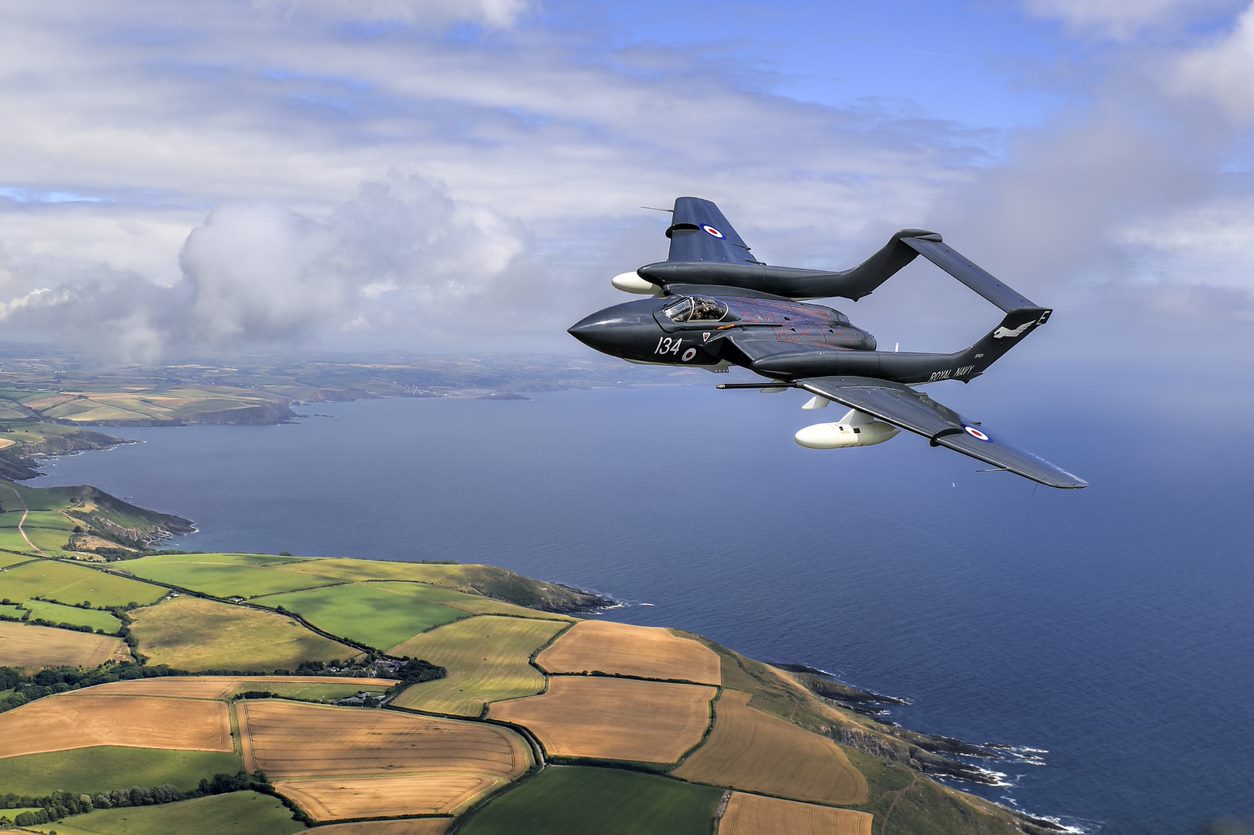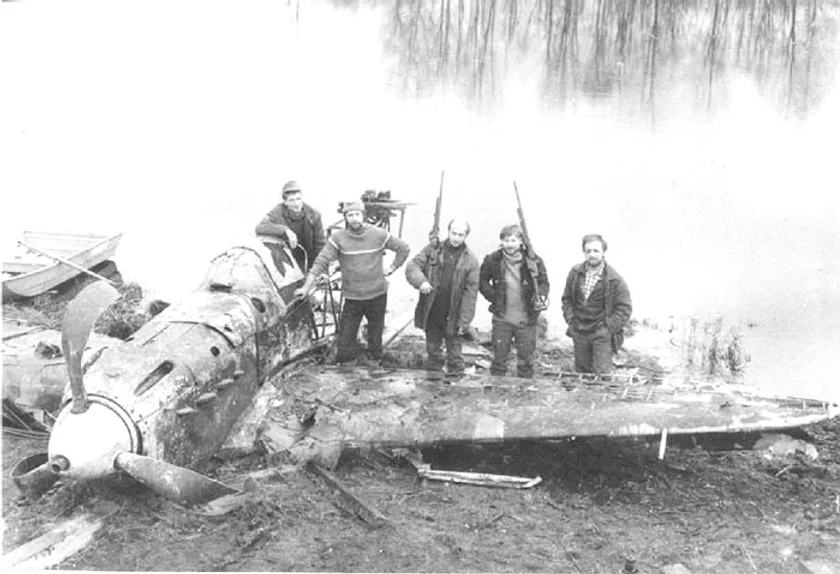de Havilland Sea Vixen

Price: on Application
An incredibly rare opportunity to own one of only twelve surviving de Havilland Sea Vixens.
Contact Us:
If you are interested in any aspect of this aircraft please get in touch. We aim to get back to any enquiries within 24 Hours.
Allan Vogel
[email protected]
Aircraft Information
History
XP 924 first flew on 23 September 1963 and was delivered to 899 Naval Air Squadron at Royal Naval Air Station (RNAS) Yeovilton on 18 December 1963. The aircraft suffered a number of incidents during its time in squadron service. Tyre bursts, canopy shattering, some engine problems and, while serving at sea in HMS Eagle, an inadvertent release of a practice bomb near the island of Gan in the Indian Ocean! Retirement from active service sent her to Royal Naval Aircraft Yard at Belfast in August 1971.
The Royal Aircraft Establishments (RAE) at Farnborough and Llanbedr were in possession from 4 June 1973 until August 1977. Flight Refuelling took over on 11 October 1977 at Tarrant Rushton and converted her to a Drone (D3) with a Red and Yellow paint scheme to improve visual acuity. In February 1996 she was taken on by de Havilland Aviation and was re-registered as G-CVIX. In May 2003 she was painted in “Red Bull” colours as a sponsorship arrangement and was subsequently purchased on 18 April 2006 by Drilling Systems Ltd (Mr Julian Jones) and operated from Bournemouth. March 2007 saw a return to Naval colours as XP 924 with the 899 Naval Air Squadron mailed fist logo.
Development
The Sea Vixen is an iconic all-British twin-boom, twin-turbojet fighter that flew from Royal Navy aircraft carriers at the height of the Cold War in the 1960s and 70s, helping to transform the nation’s carrier aviation capability. She was one of the UK’s most notable aircraft designs of the time, with cutting edge technology and the capability to go transonic. The Sea Vixen was the first British aircraft to be armed with guided missiles, rockets and bombs instead of guns and was formidably capable. The Sea Vixen’s observers seat was nicknamed the ‘Coal Hole’ due to the seating’s dark nature, however this was to improve the quality of the radar picture.
With power-folding swept wings and hinged nose-cone, she epitomised the radical and innovative thinking of British engineers and designers of the time, whose designs overcame the challenges of operating the UK’s all-weather interceptor at sea, day and night.
FAW.1 (Fighter All Weather) was the first iteration i.e test bed with all further models being designated FAW.2. FAW.2 also had a larger range of weaponry available including Red Top AA missiles, SNEB Rocket Pods and AGM-12 Bullpup missiles.
67 FAW.1 were built (these were later upgraded to FAW.2) and 29 FAW.2 were newly built.
Four aircraft were converted to D3 Standard (drones) including XP924. Any other airworthy Sea Vixens became target tugs designated as TT.2
The Sea Vixen was phased out in 1972 in favour of the American-made McDonnell Douglas Phantom FG.1 interceptor.
Of the 145 DH Sea Vixens built only 12 survive. XP924 was the only Sea Vixen on the European Air Show circuit.
Royal Navy Service
Sea Vixens, flying from HMS Centaur in 1964, took part in the successful operation to restore stability in the East African state of Tanganyika. In 1961 and 1964, Sea Vixens saw service in the Persian Gulf and later in the 1960s they played a crucial role during the days of the Beira Patrol preventing oil reaching landlocked Rhodesia. In 1967 Sea Vixens also helped cover the withdrawal from Aden.
Specifications
CREW – 2
FLIGHT SPECS
Speed – 690mph or 594 Kts
Range – 600 miles
Ceiling – 48,000 ft
Climb Rate – 12,000 ft/min
DIMENSIONS
Length – 55 ft 7 in (16.94 m)
Wingspan – 51 ft (15.54 m)
Wing Area – 648 ft² (60.2 m²)
Height – 10 ft 9 in (3.28 m)
ENGINES
2 x Rolls-Royce Avon MK.208 (R.A.24)
Turbo Jet with axial flow compressor and turbine
ARMAMENT
4 Firestreak or Red Top Air to Air missiles
4 Bullpup Air to Surface missiles
1 Nuclear Weapon
4 x 500lb bombs or two 1000lb/2000lb bombs (could carry 4 x 500 + 2 x 1000 at once)
Napalm tanks
4 2” rocket pods with 36 in each pod, 24 x 3” rocket projectiles (RP)
2 Photo Reconnaissance (PR) camera pods, 4 x 25lb practice bombs
The Sea Vixen G-CVIX XP 924 suffered a hydraulic failure in May 2017 resulting in a highly controlled wheels up landing. The airframe was assessed and number of repairs were done. However a decision was made to offer XP924 for sale and Historic & Classic Aircraft Sales Ltd are the appointed brokers responsible for the disposal. There is a considerable inventory of spares including five spare engines and ground equipment.
All inquiries to forwarded to [email protected] or contact Allan Vogel on +44 776 993 4646.


